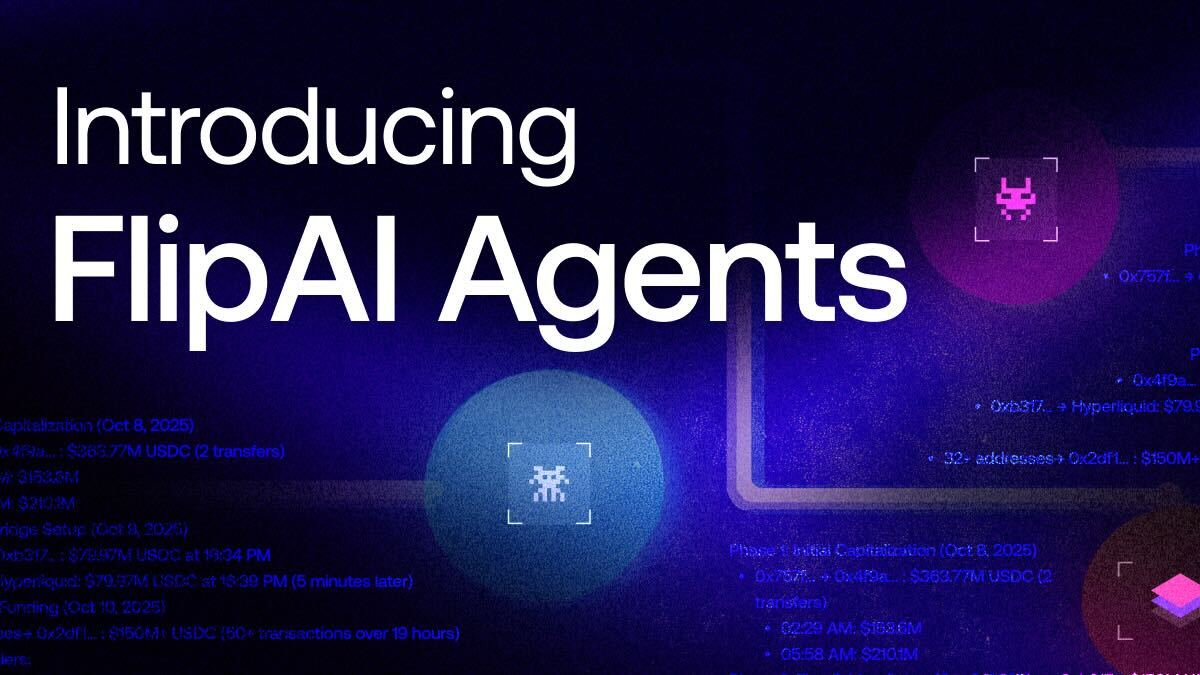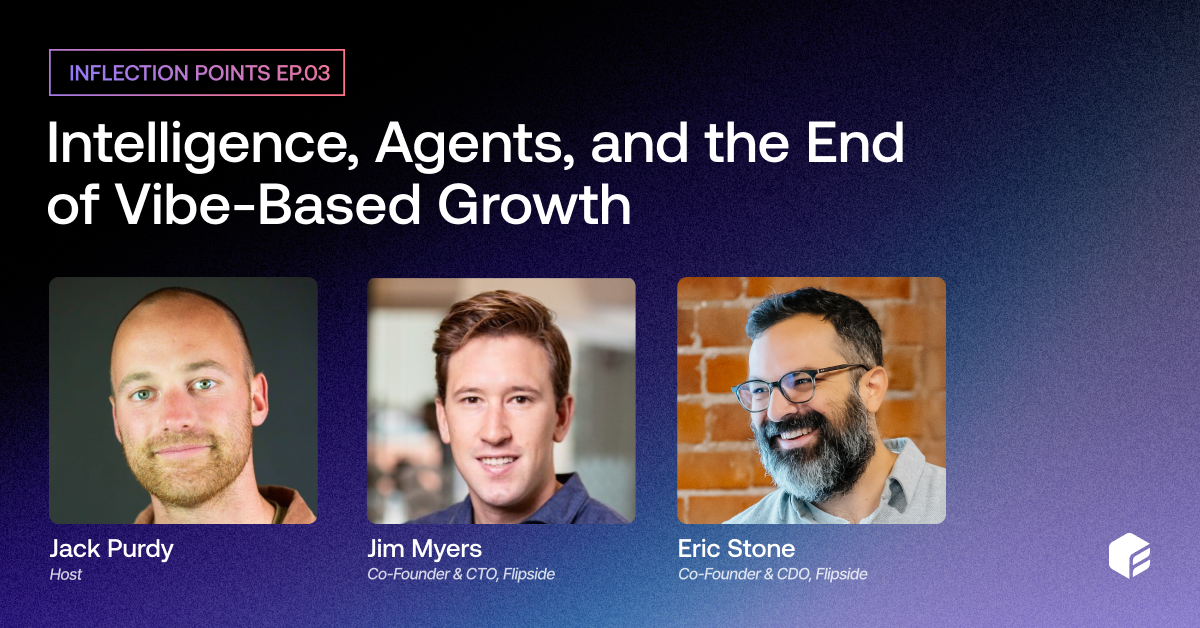Beyond the Buzz: Does Social Hype Drive Lasting On-Chain Growth? (Part 2)
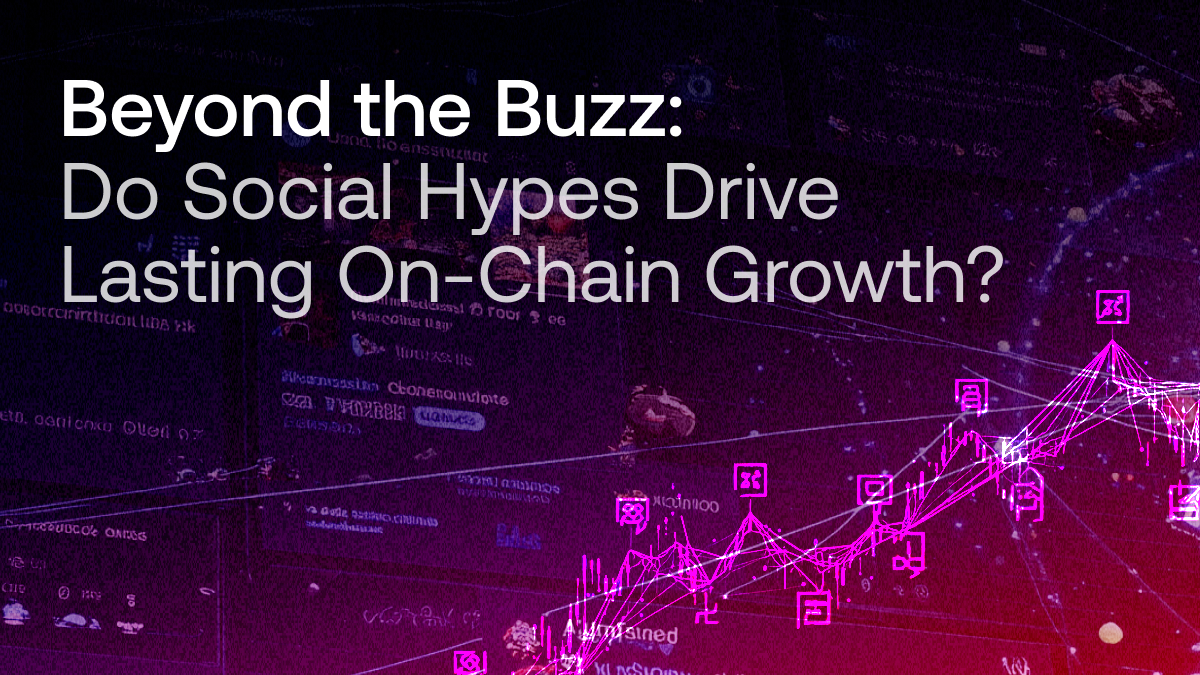
Part 2 of a deep-dive into whether viral X posts and incentivized campaigns translate into durable, on-chain growth. Read Part 1 here.
In Part 1, our analysis of incentivized social campaigns revealed a consistent pattern across multiple projects: while social hype can drive short-term spikes in user activity, these gains rarely translate into sustainable growth. Key observations include:
- Artificially inflated engagement metrics that quickly return to baseline once incentives end
- Declining percentages of quality users despite temporary increases in user numbers
- Strong correlation between activity spikes and token price movements, making it difficult to attribute growth to social campaigns alone
- Virtually no statistical evidence of lasting impact on meaningful metrics after campaigns end
These findings raise a critical question: If structured, incentivized campaigns struggle to create durable growth, can organic social buzz fare any better?
Let's examine the data from non-incentivized projects that experienced viral social moments to find out.
Organic Social Buzz: The Illusion of Influence
The non-incentivized category—tracking the impact of viral posts and high-mindshare moments—tells an even starker story:
Aptos
Aptos is a more mature chain with larger transaction volume, user base, and trading activity, showed virtually no response to social buzz. Quality user percentages declined over time, while transaction activity and active users remained flat except for a few outlier peaks—despite the significant social "yapping" moment. The DEX volumes appear highly volatile, making it difficult to determine whether the 115% increase from pre-yap to yapping period is actually attributable to the yapper or simply random fluctuation.

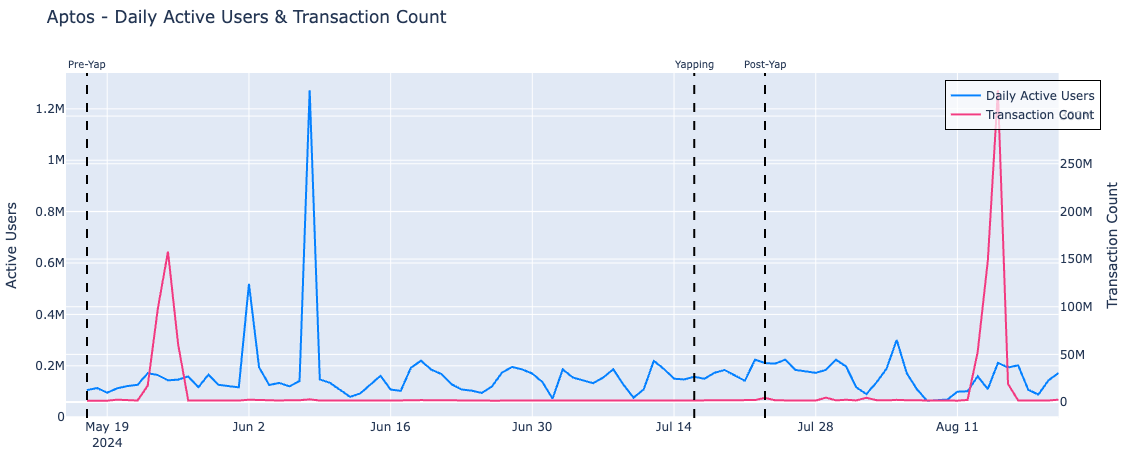
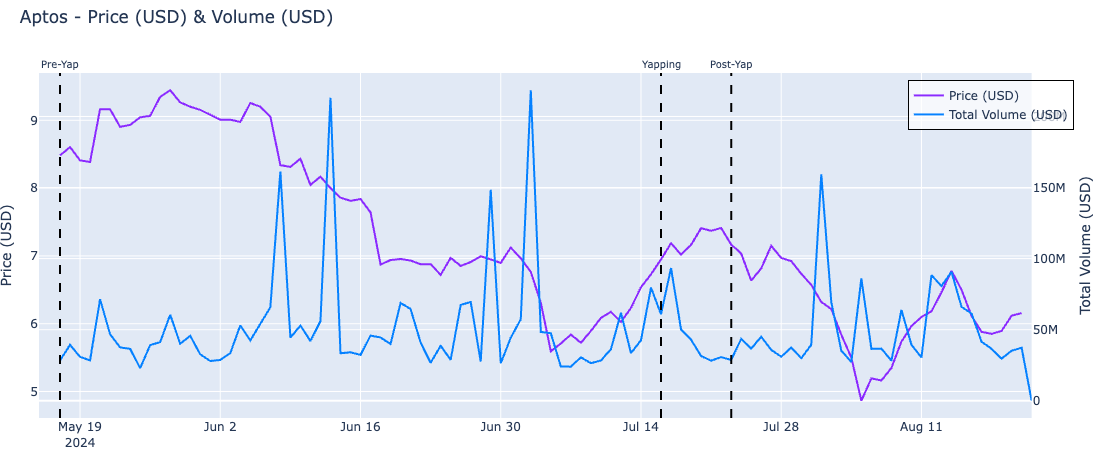
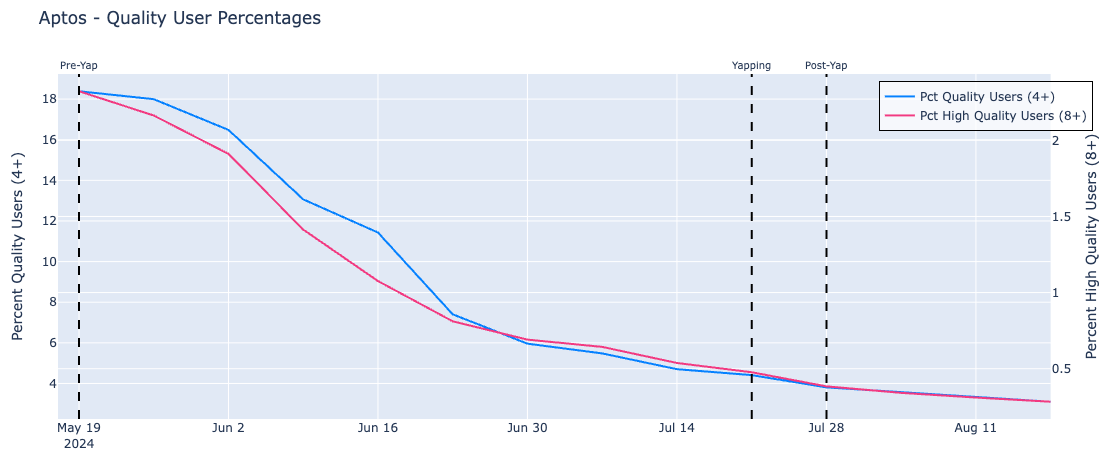
Eclipse
Eclipse, as a pre-TGE chain, demonstrated some positive correlation with social activity, including significant increases in transaction count, active users, and DEX volume. The percentage of quality and high-quality users also reached 20% thirty days after the social hype. However, this trend had already begun before the social "yapping" mindshare peaked, making it difficult to determine whether other factors were responsible for this sustained growth.

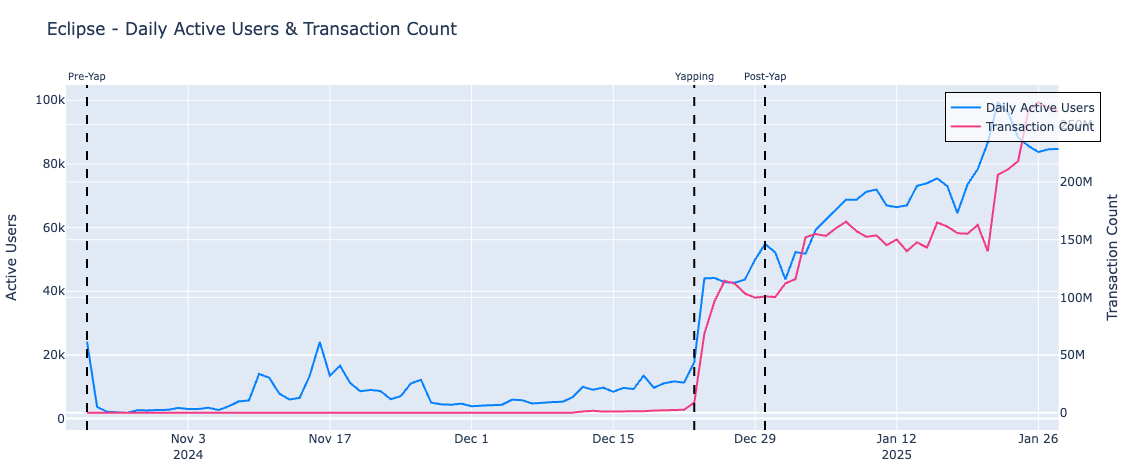
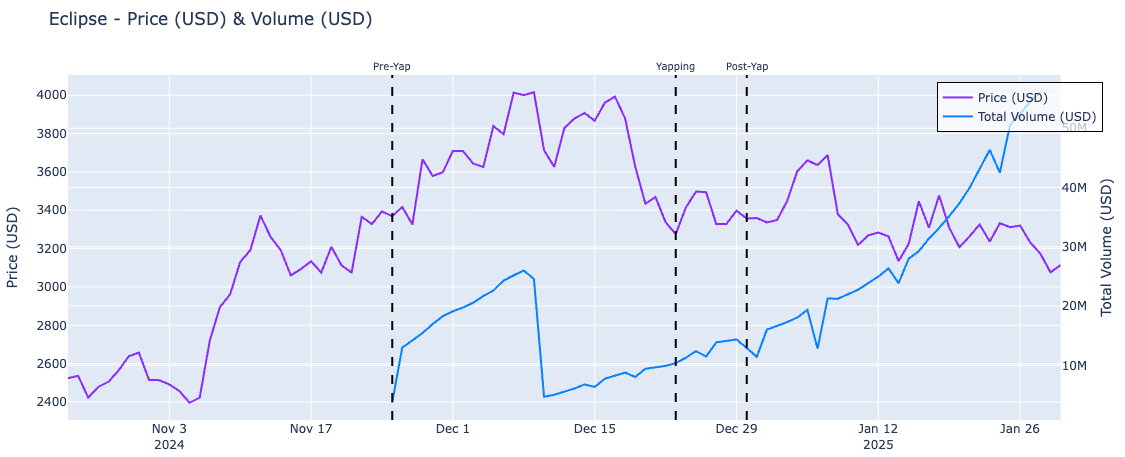
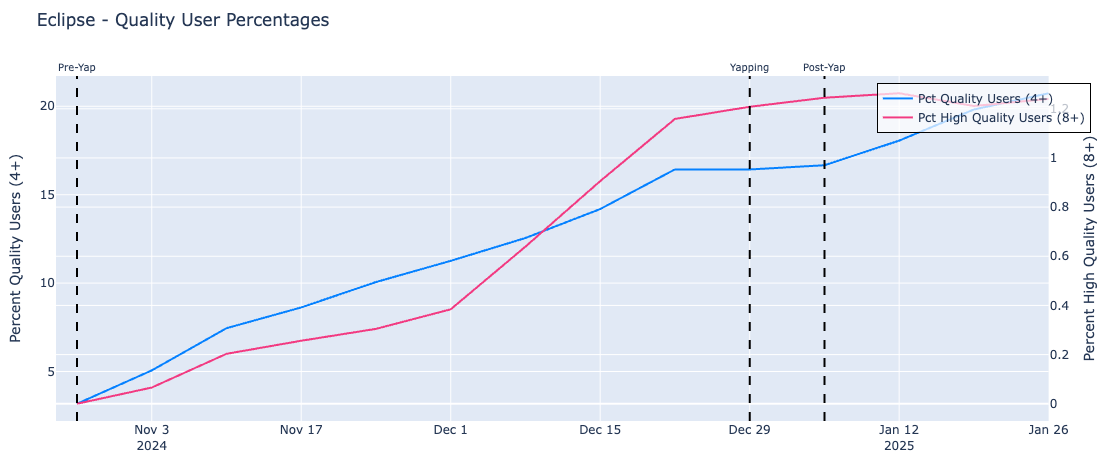
NEAR
Near showed virtually no response to social hypes, with quality user percentages declining 58% and high-quality user percentages decreasing by 68% after the social buzz. Daily active users dropped across the board almost immediately following the social "yapping" moment. The only metric that increased after the yapping period was total DEX volume. However, this DEX volume peak occurred on exactly the same date—August 5th, 2025—when NEAR token's price hit bottom. It's highly likely the volume spike was caused by this price movement rather than by social media activity.

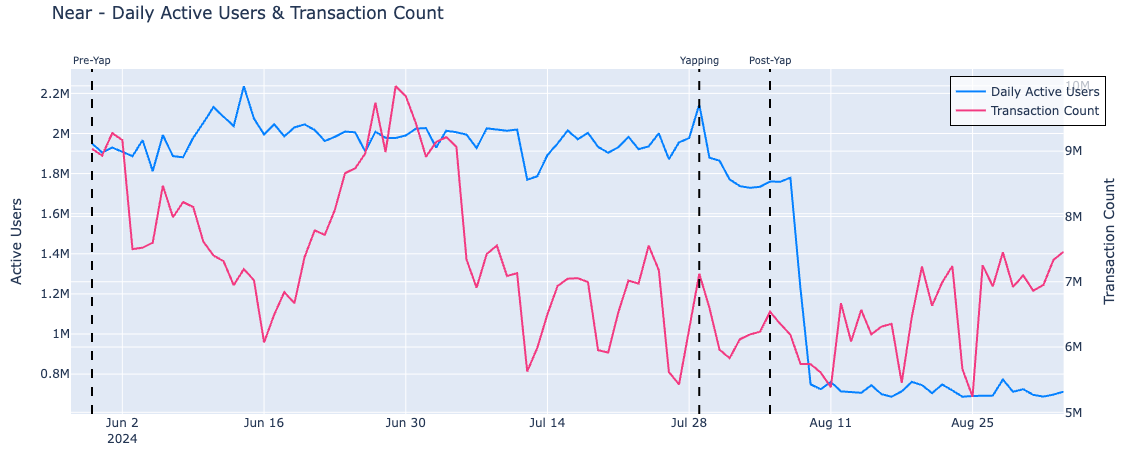

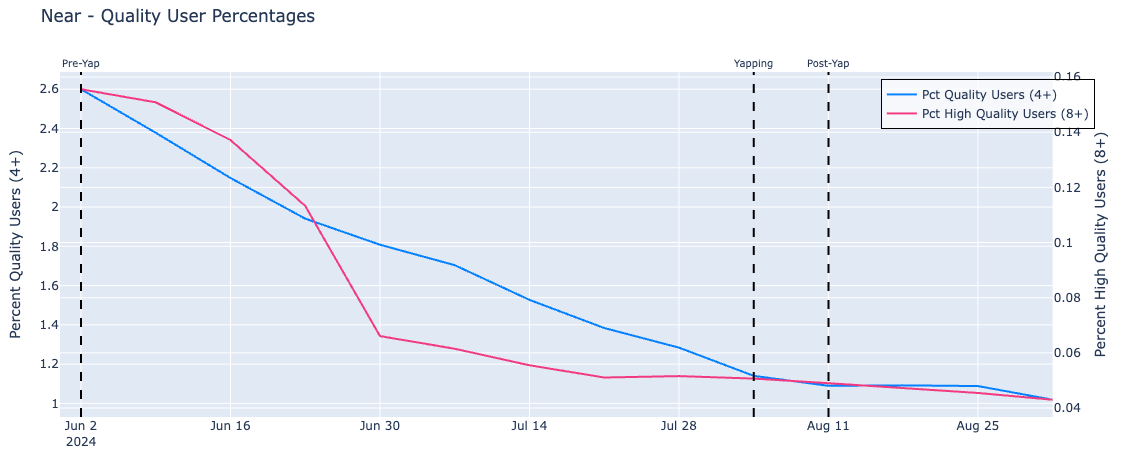
Frax
Frax demonstrates minimal responsiveness to social media influence, with analysis revealing no statistically significant changes across multiple metrics. The data visualisation clearly illustrates that transaction volumes, daily active users, quality user percentages, and DEX activity maintained their pre-existing patterns regardless of social media engagement spikes. This stability across metrics suggests that more established protocols with dedicated user bases may be particularly resilient to short-term social media influence, as users engage based on fundamental utility rather than promotional content.

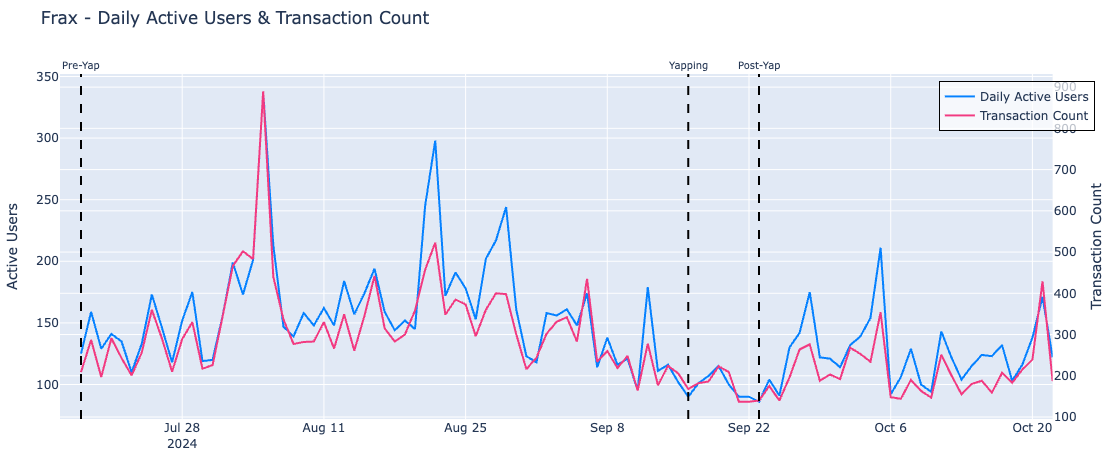
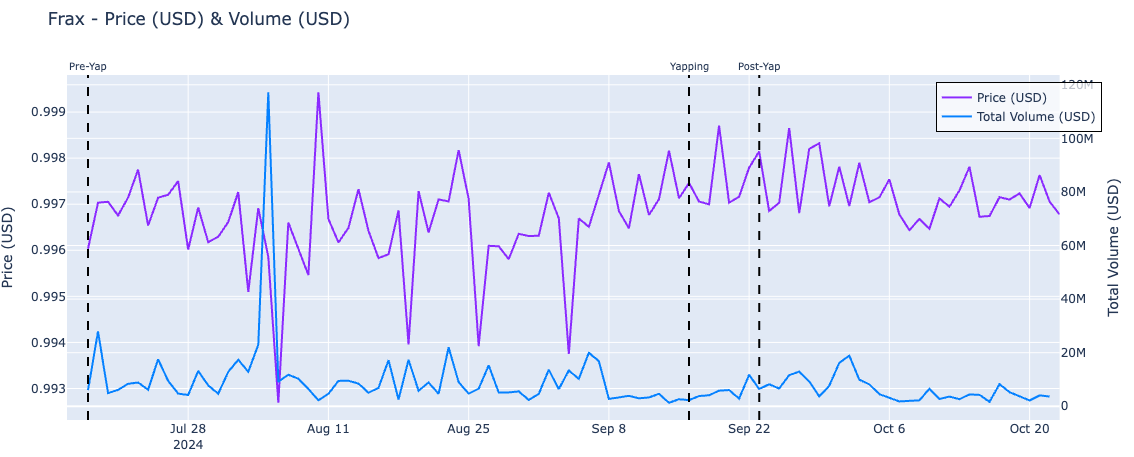
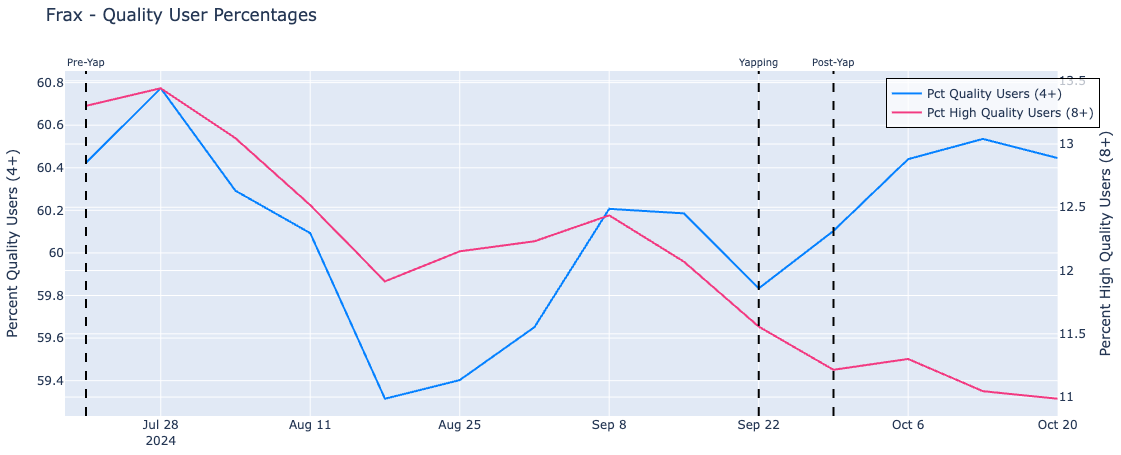
The Attribution Problem: Social Hype vs. Market Forces
One of the most significant challenges in measuring social media impact is the confounding effect of market dynamics. In the very few cases where we observed positive on-chain metrics following social events, these improvements coincided with native token price appreciation.
This creates what we call the "attribution problem": Is increased activity driven by social buzz, or by rational economic behaviour as token prices rise?
While it’s hard to be certain which one is the true driver, the most likely scenario suggests the latter. Users are more likely to engage with protocols when their tokens are appreciating—not because they saw a compelling tweet, but because there's money to be made.
Why Social Hype Fails to Drive Lasting Growth
Quality vs. Quantity Gap
Social campaigns excel at driving vanity metrics but struggle to attract genuinely engaged users. Our analysis consistently shows that while absolute user counts may spike during social campaigns, the percentage of quality users (those with meaningful on-chain engagement) often declines after the campaign or shows minimal improvement.
Mercenary User Behavior
Incentivized social campaigns particularly suffer from attracting "mercenary" users who participate solely for rewards and disappear once incentives end. The dramatic post-campaign drops we observed across multiple projects reflect this reality.
Signal vs. Noise
In an attention economy where every project is shouting for mindshare, individual social posts—even from prominent yappers—struggle to cut through the noise and drive meaningful behavioral change. Users have become increasingly sophisticated at distinguishing between genuine innovation and promotional content.
Misaligned Incentives
Social campaigns optimize for engagement metrics (likes, shares, mentions) rather than on-chain value creation. This fundamental misalignment means that even successful social campaigns may fail to translate into sustainable blockchain growth.
The Exceptions That Prove the Rule
Our analysis did identify some cases where social influence appeared to have more pronounced effects:
Emerging chains like Eclipse and newly emerged protocols like Lombard Finance showed greater responsiveness to social activity, but this comes with important caveats:
- Pre-TGE projects have smaller, more engaged communities where individual voices carry more weight
- Lower baseline activity makes percentage changes appear more dramatic
- The attribution problem remains: other concurrent events (like game launches) may be the true drivers
Protocol-level campaigns sometimes showed more promise than chain-level efforts, possibly because they target more specific, engaged user bases rather than attempting broad market awareness.
Even in these exceptions, however, the effects remained difficult to verify independently and often coincided with other developments that could explain the observed changes.
Implications for Blockchain Marketing Strategy
Based on our findings, blockchain projects should consider the following strategic shifts:
- Stop Chasing Vanity Metrics: daily active user counts and social media mentions may look impressive in pitch decks, but they're poor predictors of long-term success. Focus on quality user acquisition and retention instead.
- Rethink Social Spending: the millions spent on social media campaigns and influencer partnerships may be better allocated to product development, user experience improvements, or sustainable incentive programs.
- Measure What Matters: track quality user percentages, retention rates, and genuine value creation rather than user counts, TVL or social engagement metrics.
- Build for Retention, Not Virality: design experiences that encourage sustained engagement rather than one-time interactions optimized for social sharing.
The Hard Truth About Blockchain Growth
The blockchain industry has collectively bought into the myth that social media influence translates directly to on-chain value. Our analysis suggests this belief is largely misguided.
Real blockchain growth is hard. It requires building genuinely useful products, aligning economic incentives properly, and attracting users who see long-term value in engaging with your protocol. This work isn't as flashy as viral social campaigns, but it's what actually moves the needle.
The protocols that recognise this reality—and focus their resources accordingly—will likely outperform those still chasing the social media mirage.
Conclusion: Beyond the Hype Cycle
While social media will always play a role in awareness and community building, our analysis makes clear that it's not a growth panacea. The most successful blockchain projects of the next cycle will likely be those that:
- Prioritize product development over promotional campaigns
- Focus on quality user acquisition rather than maximizing raw user numbers
- Design sustainable economic models rather than relying on temporary incentive programs
- Measure success through retention and value creation rather than vanity metrics
The age of easy growth through social media hype may be ending. The projects that adapt to this new reality—building real value for genuinely engaged users—will be the ones that survive and thrive in an increasingly competitive landscape.
The evidence is clear: while social influence can create temporary spikes in activity, lasting blockchain growth comes from fundamentals, not followers.
This analysis examined social media influence across multiple blockchain ecosystems using Flipside Crypto's proprietary scoring methodology. For the complete dataset and methodology, see the full technical analysis.


